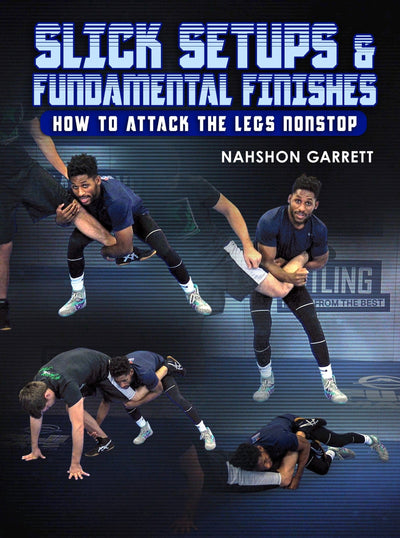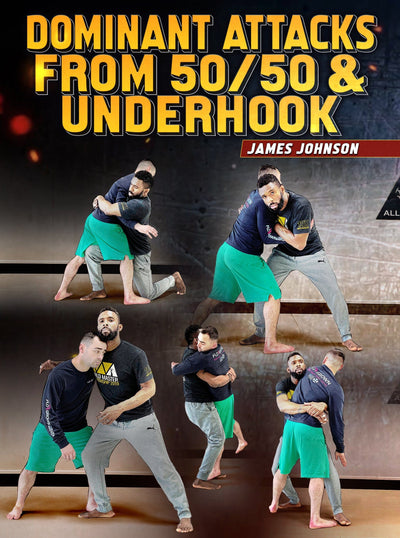The Art of Fakes and Feints with Thomas Gantt
Wrestling is a very precise and reactive sport. Particularly when you get to higher and higher levels, you need to be practicing drills with the mindset of being a few steps ahead of your opponent. Intensively training fakes and feints gives you the ability to drill a multitude of different reactions and possible scenarios with your partner.
Depending on how people train, everyone reacts differently to fakes given the current situation. However when you start to really get good at these drills, you will be able to invoke the reaction of your choice out of your opponent.
In this video, Thomas Gantt goes over a handful of different fake and feint options, adding his personal touch and experience from his years of competing. Check it out below!
As a redshirt in his 2014-15 season at North Carolina State, Gantt competed in 5 open tournaments, winning four of them and placing third in the other. Competing at both 157 and 165 pounds that season, he held an impressive record of 10-1 at 157 pounds, and 13-0 at 165 pounds for a combined season record of 23-1. Considering he usually competes at 157 pounds, his record at 165 is all the more impressive.
Add more fakes and feints to your arsenal! Click Learn More!
Since his college career, he has continued his success in coining the titles of 2018 Bill Ferrell International Champion, 2019 USA World Cup Bronze Medalist, 2019 US Open Finalist, and the list goes on. His years wrestling at a professional level have noticeably helped him sharpen and perfect his game.
Thomas begins this video by sharing that he is big on wrestling from the outside, and a lot of what he uses from the outside are fakes and feints. Two of his favorites being a body fake which he clarifies is more like a feint, and a foot fake.
He begins the video with the foot fake which comes from the outside when he is not touching his opponent. The example he uses is when his opponent is in a squared stance, prompting him to take a staggered stance. Being about three feet away from his partner, staying low he pushes off of his back foot taking a deep step forward, closing the gap and making a triangle with his foot at the point of his opponents feet. He states this is the first step in making your opponent begin to feel antsy and threatened.
Thomas states that the most common mistake people make when using this is not being at the right level. He describes it as if being extremely low is an A and being higher up in your stance is a C, you want to be at a B level. When quickly changing levels back and forth from A to C, the fake starts to become less and less real to your opponent. Staying at a consistent B level once you go for the fake makes it much more believable.
Once you are here it is important not to pull out and away from the distance you just closed. The whole point of the foot fake is so your opponent reacts and moves, creating angles for you to begin attacking from.
Next he transitions to the body fake, clarifying that this move is primarily done from the inside. Since you are going to be on the inside for this move, you want to do more of a feint, ensuring you do not step too much. When a match starts and wrestlers first make contact with one another, Thomas relays that often both guys will get a collar tie, with one guy having his arm either outside on the elbow or on the inside. Thomas states from this position he would rather have his arms on the inside so it is easier for him to bring his arms down to attack.
He explains that with your arm on the outside in this scenario, most likely your thumb is going to be in his elbow crease controlling your opponents elbow. As soon as your opponent feels your hand come off his arm, he is going to pull his arm down anticipating an attack. Keeping your arm on the inside leaves less opportunity for telegraphing.
Being on the inside you should get grips on both the collar and the tricep, anchoring down. From here you are able to quickly drop your hands and get back down to the B level to start attacking or prompting your opponent to create angles for you.
Using the same level changing technique as the foot fake, Thomas clarifies again that you do not want to rock up and down changing your levels from A to C in this body fake. You swiftly get to a B level and stay there, bringing your arms down to your side and being ready for your opponents reaction. To see some of Thomas’s favorite places to go from these fakes and feints, check out the rest of his instructional!
This three part instructional covers everything including:
- Fakes, feints, snaps, and understanding angles.
- Attacks from post, step and snap, and low singles
- Multiple strategies from defending legs on your feet
As Thomas’s competitive experience has carried on from the collegiate to the professional level, he has shown his dedication to the sport and to perfecting his game. His success puts him at the top of the playing field, and his technique is massively beneficial to both beginner and more experienced wrestlers.










